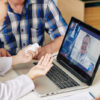No products in the cart.
Your Ultimate Guide to Preparing for a Remotely Proctored CPS Exam

Preparing for a high-stakes certification examination is an intensive process that requires focus, dedication, and meticulous planning. We at the Council on Pharmacy Standards (CPS) recognize the immense effort you invest in your professional development. In our commitment to providing accessible and safe testing options, we introduced Live Remote Proctoring (LRP) to allow you to take your exam from the security of your home or office. We understand that while this option offers incredible convenience, it also introduces a new set of variables and questions for our candidates.
Our goal is to demystify the LRP process entirely. We want you to walk into your examination feeling confident not only in your professional knowledge but also in your technical and environmental readiness. Think of this guide as your definitive checklist—a step-by-step resource to help you prepare for a smooth, secure, and successful remote testing experience. We are your partners in this journey, and your success begins with thorough preparation.
Weeks Before Your Exam: Building a Foundation for Success
A stress-free exam day is the result of careful planning that begins weeks in advance. These foundational steps will help you address any potential issues long before your scheduled appointment.
Master the Technology
The most critical component of a successful LRP experience is ensuring your equipment is fully compatible and optimized.
Run the Official System Check… Twice: Immediately after you schedule your LRP exam, you will be prompted to run a mandatory system readiness check. Do this right away on the exact computer and in the same location you plan to test. This check validates your operating system, webcam, microphone, and internet connection. We strongly advise you to run this system check again one week before your exam date. This will catch any issues that may have arisen from automatic software updates or changes to your system.
Understand Your Equipment: Your webcam and microphone are your connection to the proctor. An internal, built-in webcam and microphone are usually sufficient. If you use external devices, ensure they are properly connected and selected as the default device in your system settings. A headset with a microphone is not permitted.
Secure a Stable Internet Connection: A consistent internet connection is non-negotiable. Whenever possible, we highly recommend using a wired Ethernet connection instead of Wi-Fi. A wired connection is faster and far more stable, significantly reducing the risk of a disconnection that could disrupt your exam. If you must use Wi-Fi, ensure you are in a location with a strong, reliable signal, and ask others in your household to refrain from high-bandwidth activities (like video streaming or online gaming) during your exam.
Familiarize Yourself with the Rules
Deep-Dive into the Candidate Handbook: The official CPS Candidate Handbook is your single most important resource. It contains a detailed section on LRP policies and procedures. Read this section multiple times. It outlines everything from prohibited items to the rules of conduct and the exact steps of the check-in process.
Watch the Tutorial Videos: On our LRP resource page, you will find short tutorial videos that walk you through the entire experience, from the pre-exam system check to the final submission. Watching these will give you a clear visual understanding of what to expect on exam day.
Know the Prohibited Items List: There is zero tolerance for unauthorized items in the testing area. This includes cell phones (which must be off and out of arm’s reach), watches of any kind (including analog and fitness trackers), headphones, dual monitors (which must be disconnected and turned away), books, notes, and writing instruments.
The Day Before Your Exam: Final Preparations for a Flawless Experience
The 24 hours before your exam are about meticulously preparing your environment, your computer, and yourself.
Prepare Your Physical Space
Your testing environment must be secure, private, and distraction-free.
Select and Secure Your Room: Choose a room with a closed door where you will not be interrupted for any reason. Ensure the lighting is good, preferably without a bright window directly behind you that could create a silhouette.
Perform a Complete Desk Sweep: Your desk surface must be completely clear. Remove every single item: books, papers, sticky notes, pens, electronic devices, and even personal photos. The only items permitted on your desk are your computer (laptop or desktop), a single monitor, a keyboard, a mouse, and your government-issued ID.
Clear Your Walls: Check the walls around your desk. If you have a whiteboard, it must be completely erased. Any posters or pictures with extensive text should be removed or covered.
Practice Your 360-Degree Scan: During check-in, the proctor will ask you to use your webcam to show your entire room. Practice this once or twice. Pick up your laptop or webcam and slowly pan across the entire room, showing the floor, the ceiling, and your entire workspace. This will make you feel more comfortable and confident during the actual check-in.
Prepare Your Computer
Perform a Full Reboot: Restart your computer an hour or two before you plan to go to sleep. This clears the system’s memory and ensures no unnecessary applications are running in the background, giving you a clean slate for exam day.
Manually Close ALL Applications: After rebooting, ensure every non-essential application is closed. Pay special attention to programs that run in the background, such as cloud storage (Dropbox, OneDrive), messaging apps (Slack, Teams), and automatic software updaters. These can cause pop-ups or performance issues that can invalidate your exam.
Pause Automatic Updates: Navigate to your computer’s settings and pause any automatic operating system or software updates for the next 24 hours. A surprise update in the middle of your exam will cause significant disruption.
Prepare Yourself
Communicate with Your Household: This is a critical step. Inform family, friends, or roommates of your exact exam time. Explain that you cannot be interrupted for any reason. A person entering the room, even for a moment, is a security violation that will result in the termination of your exam. Place a prominent “Do Not Disturb – Exam in Progress” sign on your door.
Get a Good Night’s Sleep: Your brain performs best when it is well-rested. Prioritize a full night of sleep to ensure you are alert and focused.
On Exam Day: The Final Mile
You’ve done the preparation; now it’s time to execute.
Final System Check: Run the system check one last time about an hour before your appointment to catch any final issues.
Log In Early: Access the testing portal and begin the check-in process 20-30 minutes before your scheduled appointment. This provides a comfortable buffer to resolve any minor issues without feeling rushed.
Have Your ID Ready: Place the exact same government-issued photo ID you used to register for the exam on your clear desk, ready to be presented to the proctor.
Trust the Process and Your Proctor: The check-in process is meticulous by design. Be patient and follow all of your proctor’s instructions carefully. They will guide you through the ID verification and room scan. Remember, your proctor is your first line of support. If you encounter a technical issue during the exam, use the chat function to communicate with them immediately. They are trained professionals whose job is to ensure a fair and secure exam for everyone.
Thorough preparation is the ultimate antidote to anxiety. By following this guide, you can eliminate the technical and environmental uncertainties of remote testing, allowing you to dedicate 100% of your focus to what truly matters: demonstrating your professional knowledge and earning the certification you deserve.
We wish you the very best of luck.
The Candidate Success Team, Council on Pharmacy Standards (CPS)


